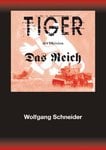schwarzpanzer
Senior Airman
- 662
- Aug 8, 2005
My basic point was that the Konigstigers armour had no Molybdenum or Manganese content (maybe even no Nickel) so a 122mm round would make a 'scab' fly through the KT (like a HESH round) unless it hit it in the turret which would likely rip it clean off.
That is without it penetrating.
Any other vs ideas?
That is without it penetrating.
Any other vs ideas?

